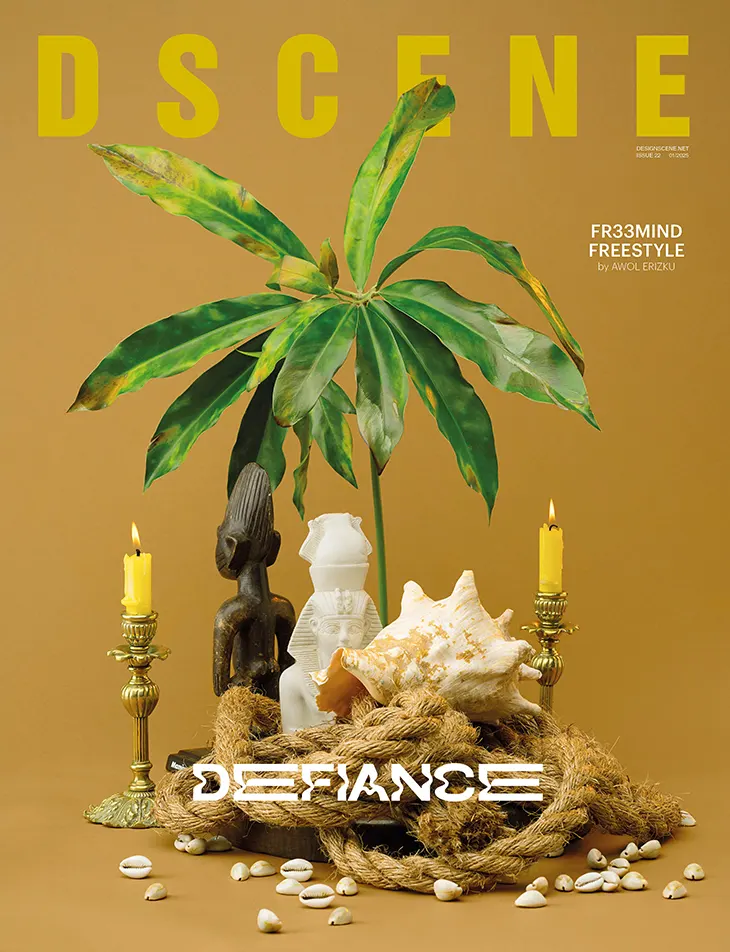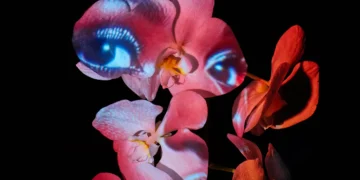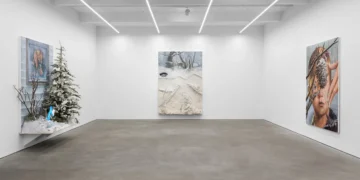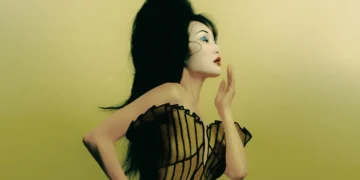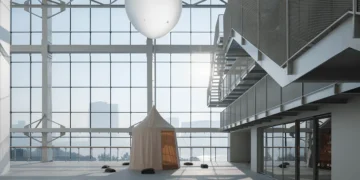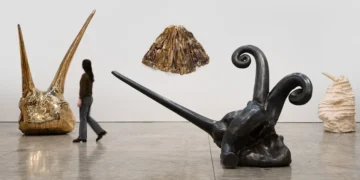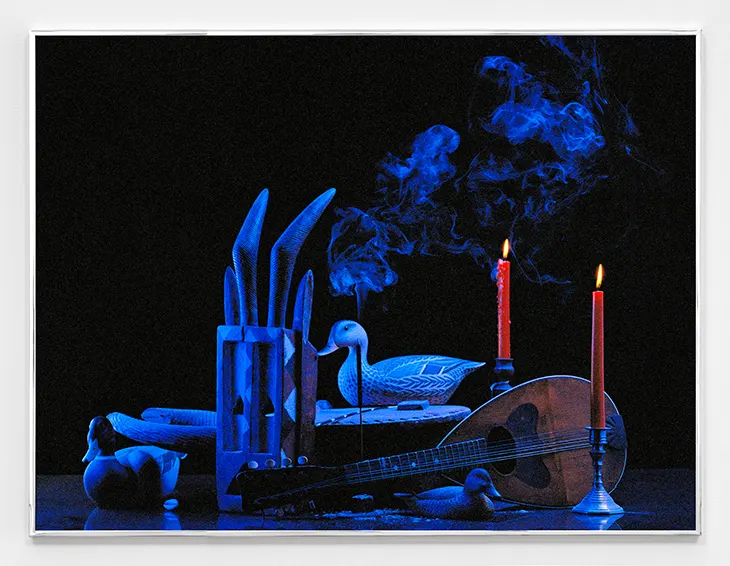
Awol Erizku’s work exists where mythology meets memory, where image meets resistance. Based in Los Angeles, the artist moves fluidly across photography, sculpture, painting, film, sound, and installation, building a visual language he calls “Afro-esotericism.” Rooted in the intersections of African and Black American cultures, Erizku’s practice dismantles Eurocentric ideals of beauty and authorship, replacing them with a symbolic system that draws from diasporic tradition, ancient myth, and contemporary life. Rather than flatten narratives, his work fractures them, assembling new meaning through refusal, ritual, and aesthetic subversion.
ORDER IN PRINT AND DIGITAL
In this conversation with editor Katarina Doric, Erizku speaks on defiance as survival, the impossibility of being contained, and what it means to plant subversion inside systems built to exclude. His stance remains unyielding within institutional spaces, sharpened by a refusal to conform. From weaponizing beauty to exposing the limits of categorization, Erizku’s practice insists on self-definition, crafting images that resist dilution and demand context. Here, he reflects on the politics of visibility, the power of omission, and the non-negotiable terms that shape his ongoing work toward Black liberation.
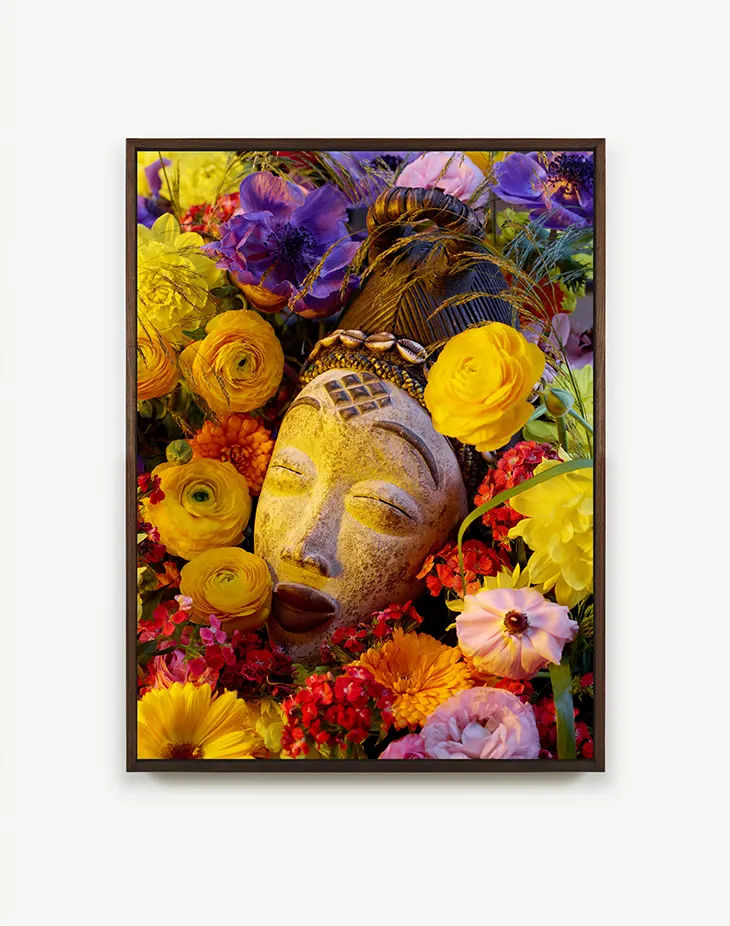
Your work often disrupts dominant narratives within art history. Do you see defiance as an essential strategy in reclaiming space for Black identity? – It’s not just a strategy; it’s survival. Art history has long been a walled garden, carefully curated to exclude or marginalize Black voices. To reclaim space, I wield defiance like a sword, carving room for Black identity to breathe, be complex, and be unapologetic. It’s about dismantling the canon’s gatekeepers and replacing their myths with our truths. Without defiance, we’re merely asking for a seat at a table that was never built for us.
I wield defiance like a sword, carving room for Black identity to breathe, be complex, and be unapologetic.
Your practice resists categorization. How intentional is your refusal to stay within one medium or aesthetic? – Categories are glass ceilings: transparent yet confining. Mediums and aesthetics are not destinations, but tools to shatter them. I move fluidly between photography, sculpture, neon, and painting because the ideas demand their own forms. Refusing categorization keeps the work alive, volatile, untamed, and resistant to the art world’s compulsive urge to contain.
It is a quiet revolt against imposed definitions, an insistence that I am the author of my own becoming. Each medium becomes a dialect of the soul, a language through which my truths emerge, shifting and shimmering beyond the reach of fixed meaning.

How do you navigate the tension between making work for institutional spaces and challenging the very systems they uphold? – It’s a delicate balance. Institutions can be both platforms and cages. They amplify my voice while asking me to speak in their language. I navigate this by planting seeds in their manicured gardens, knowing they may bloom long after I’m gone.
My work seduces with beauty, then dismantles with critique. It channels Black imagination, Black rage, and Black joy in forms that force the viewer to reckon with their complicity. It’s about playing the game without becoming the pawn.
Do you believe an image can be an act of protest on its own, or does it need context to resist erasure or co-optation? – An image can be an act of protest in and of itself, but context is what anchors its resistance to erasure or co-optation. A single image can shift the world, but a single image grounded in context can embed itself in our collective consciousness, enduring far beyond the moment of its creation. In the age of the internet, without context, even the most powerful image risks being aestheticized, sanitized, or reinterpreted to serve agendas it was never meant to support. Context gives an image its spine, its politics, its urgency, and its staying power.
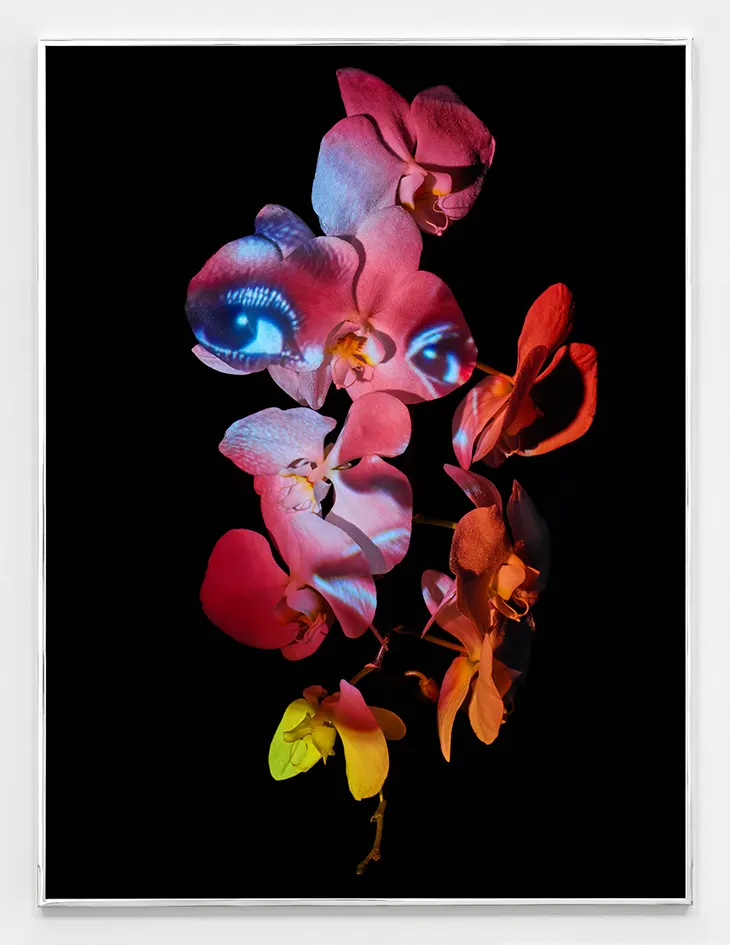
How has your background, culturally, socially, geographically, influenced your instinct to challenge authority or tradition through your art? – I grew up between worlds, anchored by African roots and shaped by American realities. That duality instilled in me a deep skepticism toward singular narratives. My upbringing taught me grit and the imperative to question systems that render you invisible. The instinct to challenge is born of an acute awareness of history’s weight and the audacity to revise it on my own terms.
Refusing categorization keeps the work alive, volatile, untamed, and resistant to the art world’s compulsive urge to contain.
In a time of increasing visibility for artists of color, how do you resist tokenization without disengaging from the mainstream art world? – I resist by remaining uncompromising. My work doesn’t pander or perform “diversity” for the sake of mainstream comfort. I engage with the mainstream on my terms, leveraging their platforms to amplify Black narratives, not dilute them. It’s about being too loud and too complex to be reduced to a quota. I’m here to reshape, not decorate.
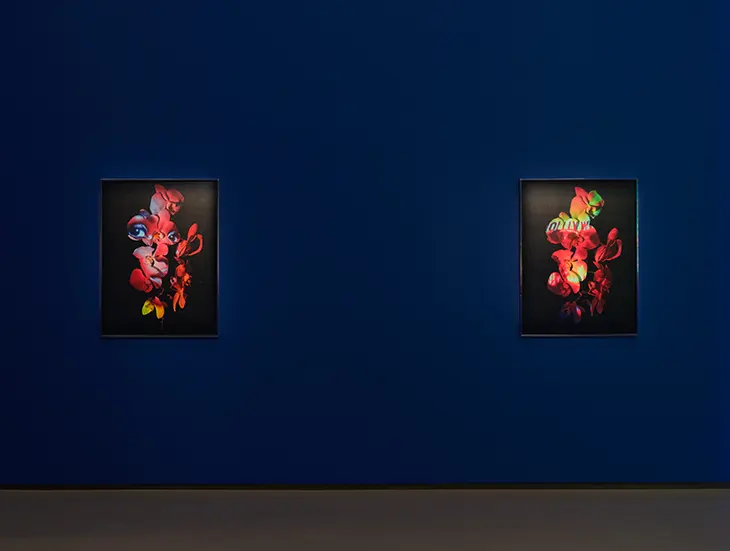
You’ve often reworked iconic Western imagery through an Afrocentric lens. What does it mean to defy origin stories in visual culture? – I’m rewriting the script to center Blackness, to show our stories were always there, just overlooked.
Can subversion exist within beauty? How do you balance aesthetic seduction with deeper political charge? – The balance is intuitive. The aesthetic is the bait; the politics, the blade. Beauty makes the work accessible; the charge makes it unforgettable.
How do you decide what to make visible and what to keep hidden, and can omission be just as powerful as confrontation in your practice? – Everything is visible. My practice is quantum.

If defiance is about setting your own terms, what terms are non-negotiable for you at this point in your career? – My terms are ironclad. My work stays rooted in Black liberation, no dilution. Authenticity over marketability. Community over clout. And I’ll always make space for the next generation of Black artists. These aren’t just terms. They’re my foundation.
My work stays rooted in Black liberation, no dilution. Authenticity over marketability. Community over clout. And I’ll always make space for the next generation of Black artists.
Tell us about your DSCENE cover design. – The cover image is a still life from 2020 made in isolation in Los Angeles. The series of still lifes reflects my continued resistance to the commodification of the Black body. Moving beyond direct figurative representation, they weave together Pan-African iconography, botanical symbolism, and profoundly personal narratives.
